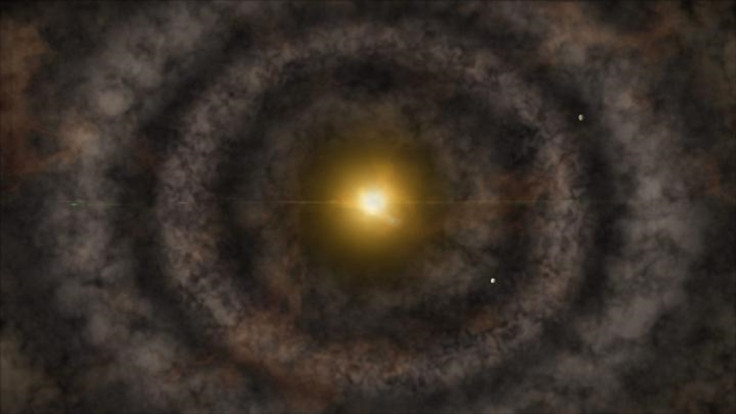Chile: Alma Telescope Captures Planet's Birth in 'One of the Most Remarkable Images Ever Seen'

The birth of a star has been captured in "astonishing" detail with the Atacama Large Millimeter/submillimeter Array (Alma) telescope in Chile.
Astronomers were able to capture the formation of a planet around an HL Tau, an infant star located 450 light years from Earth.
The image was the result of the testing of Alma's new high-resolution capabilities. Alma is the most expensive ground-based telescope in operation and became fully operational in March last year.
It is expected to provide details about the birth of stars early on in the formation of the universe, as well as star and planet formation.
The latest image provided never-before-seen features of the birth of a planet, showing the planet-forming disk with multiple concentric rings separated by gaps – a surprise finding given the star's age.
How Stars Form
Stars are thought to form in clouds of gas and dust that collapse under gravity. Eventually, the particles stick together, creating sand, pebbles and rocks. After time, these objects settle into a disk where planets, comets and asteroids form.
Once these objects have enough mass, they reshape the structure of the disk, creating rings and gaps as the planets move into their orbits and sweep clear remaining debris.
Alma deputy director Stuartt Corder said: "These features are almost certainly the result of young planet-like bodies that are being formed in the disk. This is surprising since HL Tau is no more than a million years old and such young stars are not expected to have large planetary bodies capable of producing the structures we see in this image."
Catherine Vlahakis, Alma deputy programme scientist, added: "When we first saw this image we were astounded at the spectacular level of detail. HL Tauri is no more than a million years old, yet already its disc appears to be full of forming planets. This one image alone will revolutionise theories of planet formation."
Previously, images of such clarity were only seen in computer models or artist impressions.

Researchers said being able to observe the first stages of planet formation around HL Tau could help us understand how our own planetary system looked when it first formed over four billion years ago.
Tony Beasley, director of the National Radio Astronomy Observatory, said: "This new and unexpected result provides an incredible view of the process of planet formation. Such clarity is essential to understand how our own Solar System came to be and how planets form throughout the Universe."
Alma is able to make these sorts of observations through long wavelengths, meaning it can peer through dust and gas to the core of the system. It allows for a resolution of 35 milliarcseconds – equivalent to looking at a penny from 110km away.
NRAO astronomer Crystal Brogan said: "This is truly one of the most remarkable images ever seen at these wavelengths. The level of detail is so exquisite that it's even more impressive than many optical images. The fact that we can see planets being born will help us understand not only how planets form around other stars but also the origin of our own Solar System."
© Copyright IBTimes 2025. All rights reserved.






















